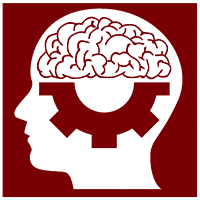
Michael Halassa, Professor of Brain and Cognitive Sciences at MIT, seeks to understand how information is routed through neural circuits in the brain and how disruptions in these circuits can lead to neurological and psychiatric disorders. As a practicing psychiatrist he aims to develop novel approaches to diagnosing and treating these illnesses guided by insights both from the lab and clinic. In this lecture, he examines the role of the thalamus in mice, in gating cortical interactions that enable the selection of visual vs. auditory sensory cues in a divided attention task. Through modeling and experimental work, he delves more deeply into the nature of the interactions between prefrontal cortex and mediodorsal thalamus that are critical for cognitive flexibility.
Video:
Additional Resources:
- Michael Halassa’s Lab website
- Rikhye, R. V., Gilra, A. & Halassa, M. M. (2018) Thalamic regulation of switching between cortical representations enables cognitive flexibility. Nature Neuroscience 21:1753-1763.
- Schmitt, L. I., Wimmer, R. D., Nakajima, M., Mofakham, S., Happ, M. & Halassa, M. M. (2017) Thalamic amplification of cortical connectivity sustains attentional control. Nature 545:219-223.
- Wimmer, R. D., Schmitt, L. I., Davidson, T. J., Nakajima, M., Deisseroth, K. & Halassa, M. M. (2015) Thalamic control of sensory selection in divided attention. Nature 526:705-709.

